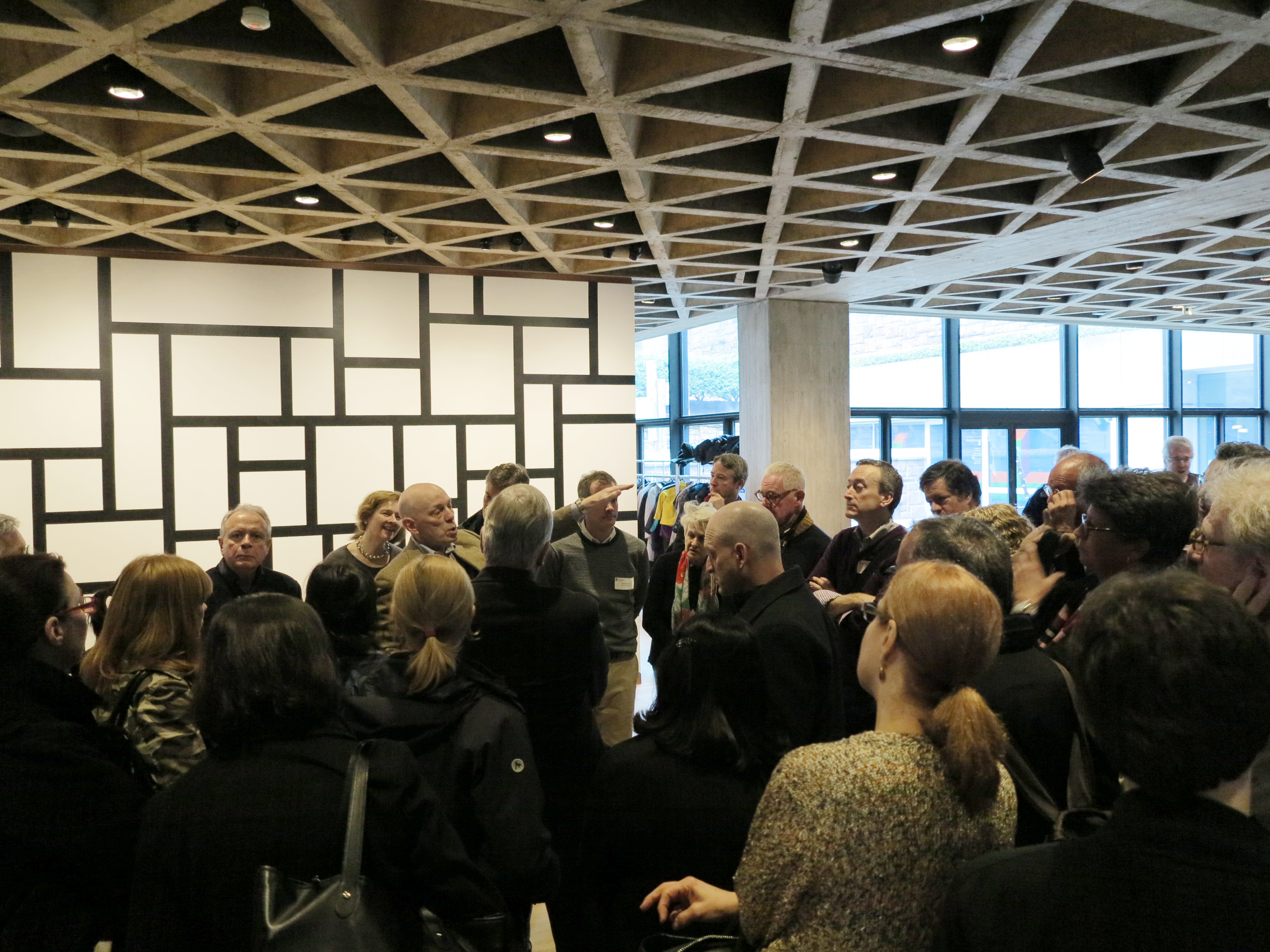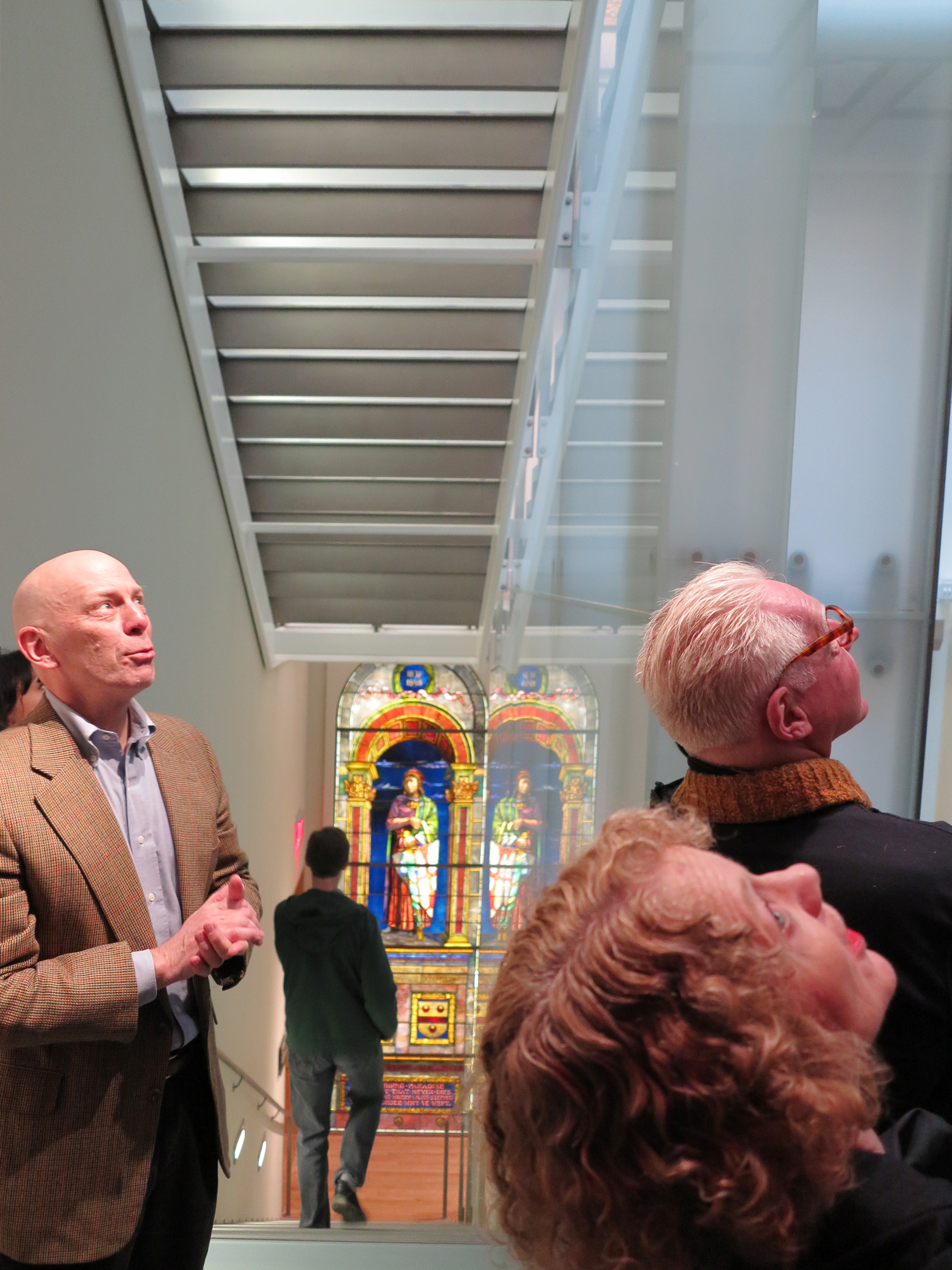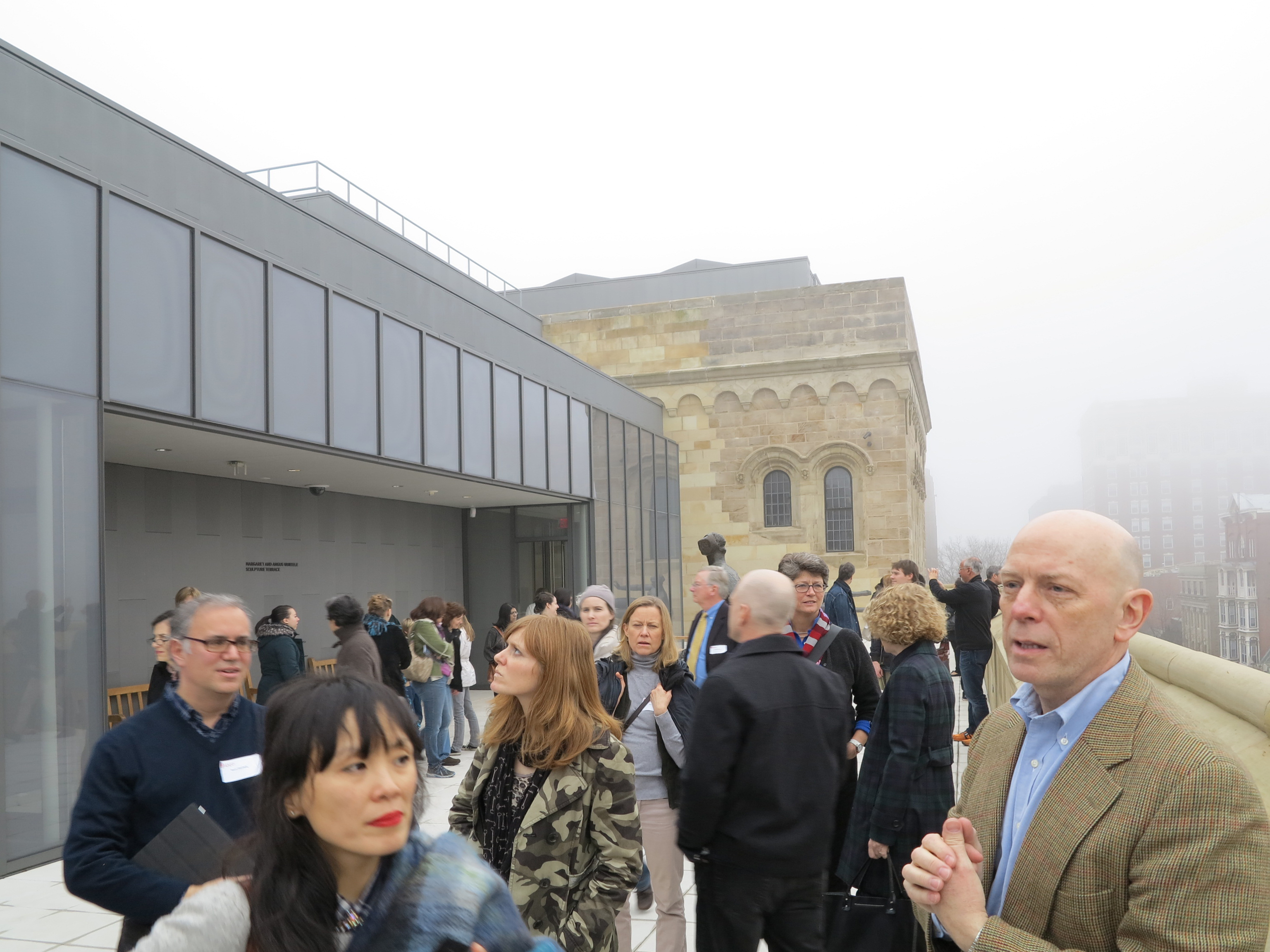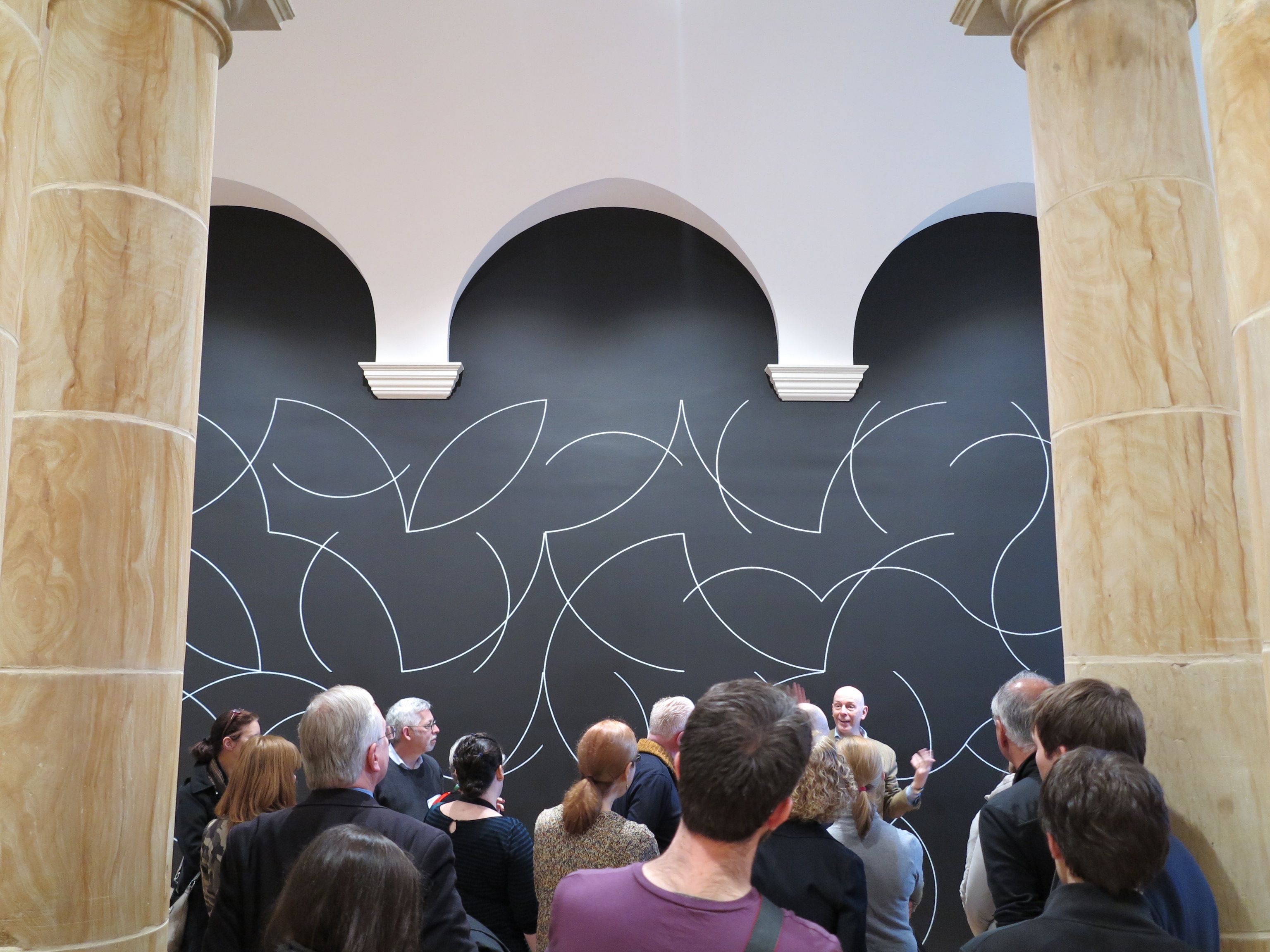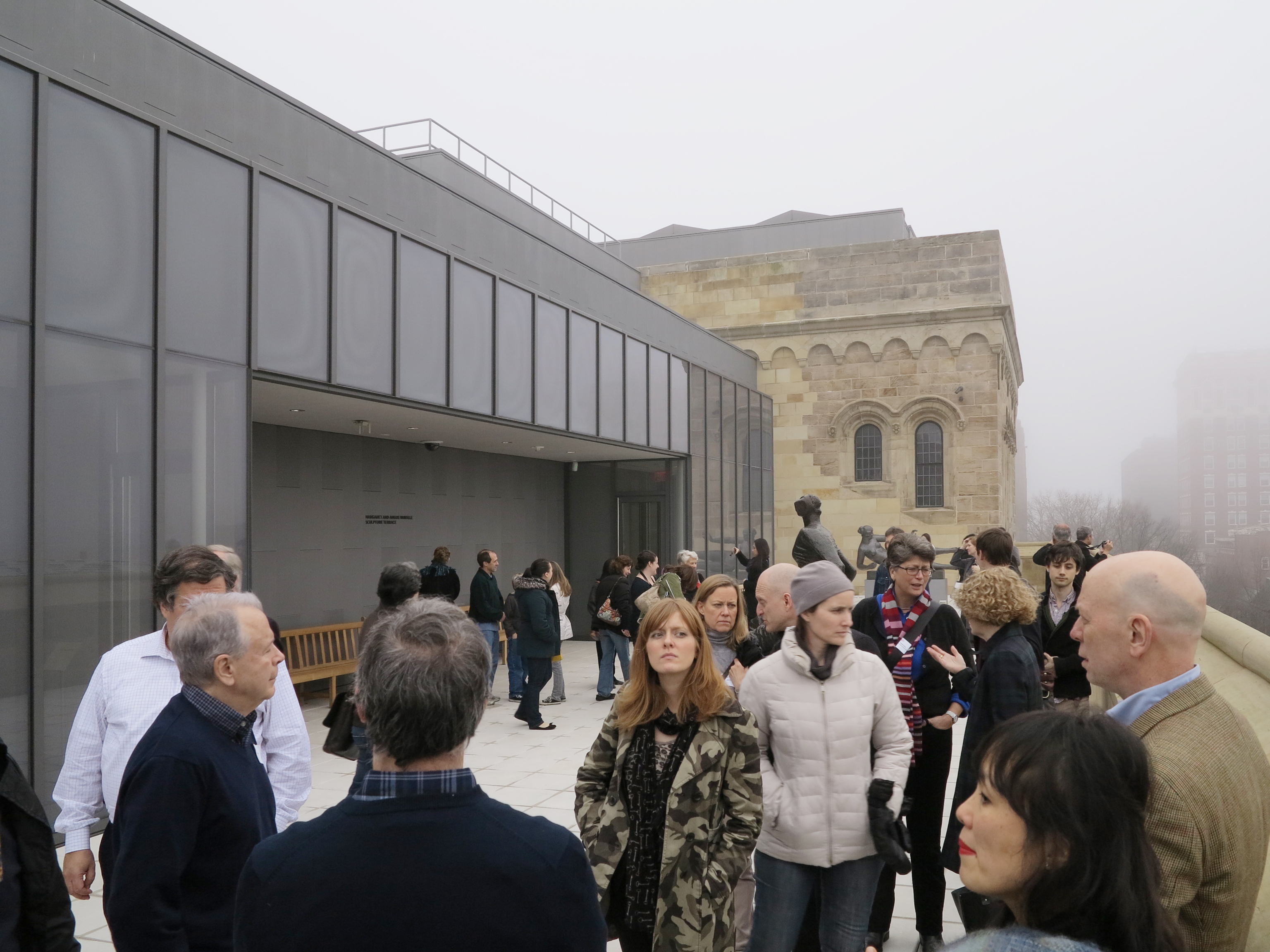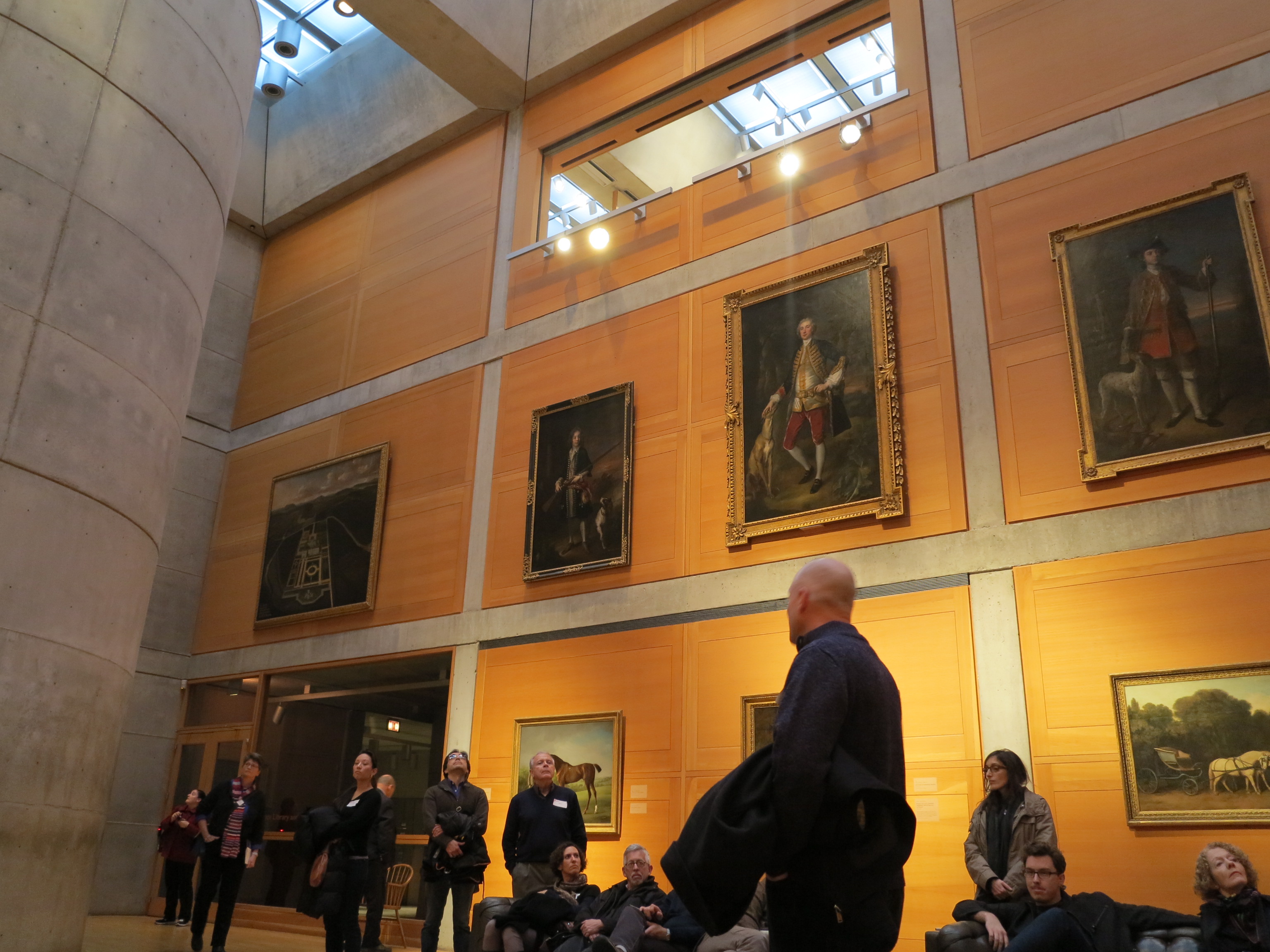by: Rob Rothblatt AIA
Fifty members of the AIANY Interiors Committee immersed themselves in a Mid-century Modern ethos at Yale University’s cultural meccas on Sunday, 01.13.13. A serious weekend double-header, the day was divided into two major events, either of which would have been a fulfilling day by itself.
The morning belonged to the exhibit titled “George Nelson: Architect, Writer, Designer, Teacher,” installed in Paul Rudolph’s Yale School of Architecture gallery. The afternoon saw the group move across the street for an intimate tour of Louis Kahn’s Yale University Art Gallery, recently renovated and enlarged by Ennead Architects; the partner-in-charge, Duncan Hazard, AIA, led the tour.
The George Nelson exhibit is a long-overdue look into the varied design interests of this mid-century titan. Yale School of Architecture’s Director of Exhibitions Brian Butterfield has installed an abbreviated version of the original Vitra show which connects Nelson to his roles at Herman Miller, his relationships with Saarinen and Eames, and the era of mass manufacturing, mass media, global marketing, and concepts of post-war living.
The tour of the exhibition was led by the Benjamin Attmore Hewitt Assistant Curator of American Decorative Arts at Yale University Art Gallery John Stuart Gordon. Gordon concentrated on several special pieces to weave together the way Nelson worked collaboratively, his use of technology, and the peculiar nature of the times. A prime example was the invention of the “Marshmallow Sofa,” widely known, playful, and meant to be affordable, but whose nimble, pre-60s Mod design was ahead of its time – and did not become an affordable mass market product. Also intriguing is Nelson’s exposition work, and his exploration of repetitive architectural grid systems, in this case 3m cubes in steel, with echoes of Eames’s own house, and Le Corbusier’s Heidi Weber pavilion. One section of the show is devoted to the expansive nature of his modular office systems for Herman Miller, which look refreshing even today. It is easy to forget just how innovative these ideas were in the fast-moving post-WWII world.
Ambition was clearly on hand for the afternoon tour of the newly opened renovated and expanded Yale University Art Gallery. Hazard began his tour with discussions of the technical challenges of renovating the existing Louis Kahn building – Kahn’s first U.S. commission and a seminal turn in his career. Then came so much more: Ennead and Yale have linked three buildings together, crossed roads, and added double-height spaces with internal bridges of their own to almost double the size of the original museum; a sectional loop runs through all of it. As Hazard gave masterful descriptions of the careful and bold interventions, such as an entirely glass and sky-lit elevator and lobby, masterworks glinted behind him: Monet, Donatello, Rothko, displaying Yale’s magnificent collection.Kahn’s work was bracketed by his first building at Yale, the Art Gallery, and his last, the British Art Center across the street. It was inevitable, having just visited Ennead’s new rooftop sculpture deck with its extensive frontage facing the BAC, that we would descend and end our day at this pantheon to Western tradition: a building so dazzling and simple, yet so mature that each generation is drawn to study its beauty and brilliance.
Committee members had much to ponder on their way home: the nature of architecture and design, the varying scales (from monumental to intimate, from building to bubble lamp). The day was interesting and inspiring, and turned out to be a fascinating study of the institutional ambitions of Yale and Herman Miller, and the personal ambitions of two of the most influential designers of the last century: Louis Kahn and George Nelson.










